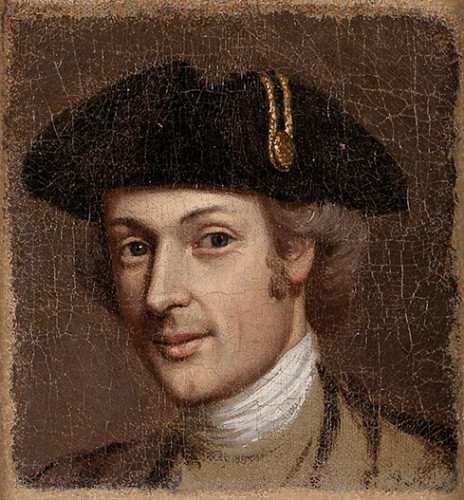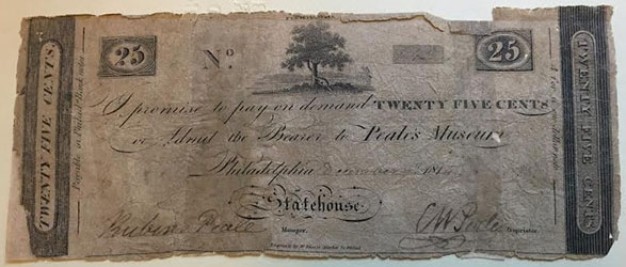Philosophical Hall’s Bear Situation
The Philadelphia Museum Admission Ticket, signed by Charles Willson Peale and Rubens Peale, 1814. APS.
Since its construction in 1787, Philosophical Hall has been both home to the APS and a meeting place for Philadelphia’s many scholars. The Society’s small beginnings left much of the building empty and up for rent to their Members and partner institutions. Charles Willson Peale (APS 1786) was one such renter who moved his Philadelphia Museum, and his family, into Philosophical Hall in 1794.

The museum, which had begun as a portrait gallery featuring American scholars and revolutionaries, transformed into a venue to “please, improve, and cultivate the mind” through science. Peale grew his collection of portraits, patent models, fossils, archaeological artifacts, and natural history specimens to share the natural sciences with the public. The museum expanded to include a menagerie of feral animals displayed in cramped outdoor corrals. These exhibits included a monkey, an alligator, a bald eagle, and two grizzly bears.

The two bears originally belonged to then U.S. president Thomas Jefferson (APS President 1797–1815), who had received them in 1807 from Captain Zebulon Pike as a gift from his exploration of the Arkansas River. Rather than house the bears on the White House lawn, Jefferson saw the Philadelphia Museum, a place of spectacle and entertainment, as a more appropriate home. After all, the museum had kept a live grizzly bear once before—in 1804. The bear was on show for an estimated two weeks before breaking out of its enclosure and being shot.
Jefferson’s grizzly cubs reached Philadelphia early in 1808, where they soon outgrew their inadequate enclosures. One of the bears broke free and was shot in Philosophical Hall’s basement kitchen. The second bear was shot too so Peale could display a pair of taxidermy bear specimens, if not live ones. Hunting and preserving animals was an integral part of the Peale Museum’s growth and seemed, at the time, a necessary violence for the good of the natural sciences. Naturalists of the period, including Peale and his son Titian Ramsay Peale (APS 1833), often destroyed nature in the pursuit of studying it and presenting its knowledge to the public.
The two bear specimens remained a steadfast part of the museum, and naturalist Thomas Say (APS 1817) used them to pen the first scientific description of the grizzly bear. Say’s colleague George Ord (APS 1817) bestowed on the specimens the official scientific name Ursus horribilis, immortalizing their ‘ruthless’ character. Visitors from across the country descended on the Peale Museum to glimpse these fearsome specimens.

Years later, in 1822, Titian Ramsay Peale painted a watercolor illustration of the two bears as if in their natural habitat. This drawing of the two bears will return to Philosophical Hall for the upcoming natural history exhibition examining how scientists collected, displayed, and organized the natural world around them. Sketching Splendor: American Natural History, 1750 – 1850, opening on April 12 2024, will highlight Titian Ramsay Peale’s botanical, entomological, and zoological drawings alongside the works of his naturalist peers William Bartram and John James Audubon.

